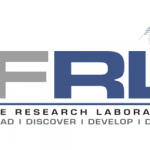Research Team Uses IBM-Q to Model Drive Cycles with Fourier Transform Simulations that Directly Relate to Car’s Efficiency & Operation

(NextPlatform) For quantum to jump into the daily express lane for the automotive industry, it might take a piecemeal approach, with certain elements of vehicle design or use finding a fit on quantum systems. But there has to be cause to put forth the software and time investment (better, cheaper, faster, etc.).
One example might be in a specific aspect of vehicle design—modeling drive cycles, an aspect that directly relates to a car’s efficiency and operation. This has long-since been the domain of Fourier transform simulations on high performance computing systems. But this problem appears to be well-suited to gate-based quantum systems, as recently demonstrated.
Using IBM-Q quantum services, a research team from the U Sydney and the Hong Kong University of Science and Technology used “Quantum Fourier Transform to Estimate Drive Cycles” and able to reach Fourier-driven drive cycle modeling results faster via a 15-qubit run on the IBM-Q16 Melbourne quantum simulator, paving the way for other workloads based on Fourier transform for quantum machines. Their abstract, still under review at Scientific Reports says:
Drive cycles in vehicle systems are important determinants for energy consumption, emissions, and safety. Estimating the frequency of the drive cycle quickly is important for control applications related to fuel efficiency, emission reduction and improving safety. Quantum computing has established the computational efficiency that can be gained. A drive cycle frequency estimation algorithm based on the quantum Fourier transform is exponentially faster than the classical Fourier transform. The algorithm is applied on real world data set. We evaluate the method using a quantum computing simulator, demonstrating remarkable consistency with the results from the classical Fourier Transform. Current quantum computers are noisy, a simple method is proposed to mitigate the impact of the noise. The method is evaluated on a 15 qbit IBM-q quantum computer. The proposed method for a noisy quantum computer is still faster than the classical Fourier transform.
While their results are promising, this is still a small quantum simulator and the team observed “significant noise” in the process, which meant they had to create and use error correction mechanisms. This is one of the most important barriers to practical quantum computing.
While this quantum simulation work for Fourier transforms is promising, the team behind the results says that in transportation in particular, the scalability of quantum systems is far from ready for large-scale programs that could have real-world implications. For instance, they say, “even a modest network of 1000 vehicles and 64 road sections would require 6000 qubits, which would be extremely cost prohibitive.”
Despite clear limitations, they add that we are nonetheless “embarking on an exciting frontier of quantum computing that has significant implications on vehicle dynamics, transportation planning and traffic management. These could help with identifying issues quickly and rapidly determining optimal responses, which could in turn help reduce congestion, emissions and improve safety.”



















